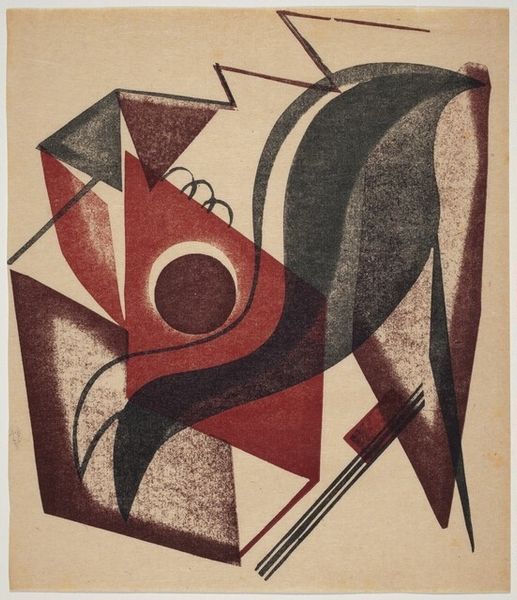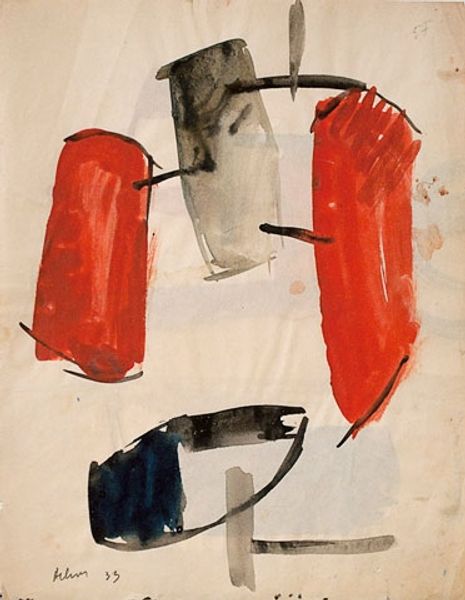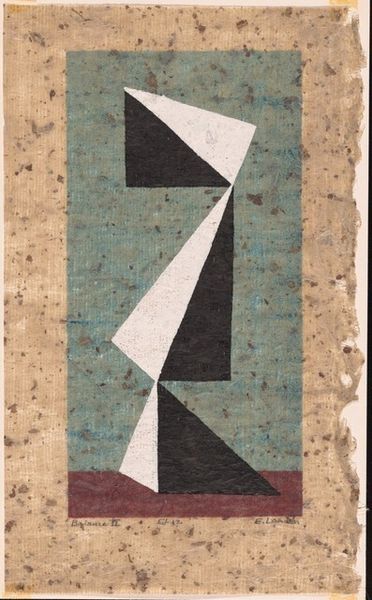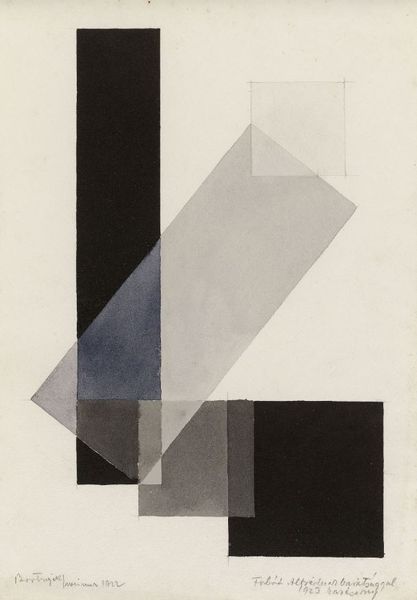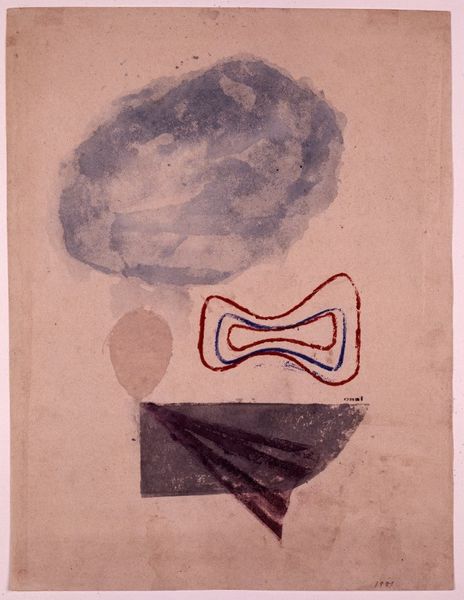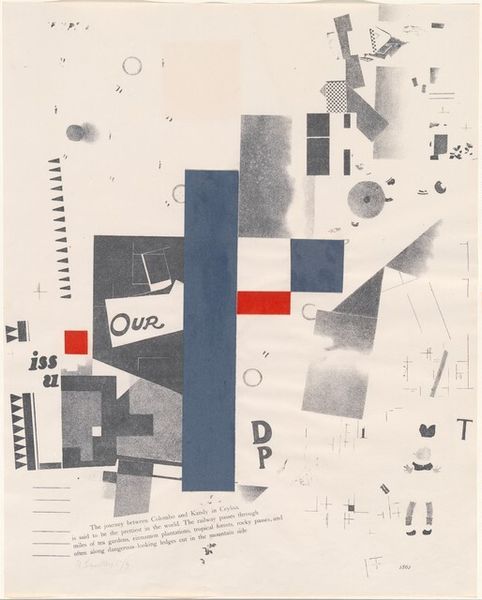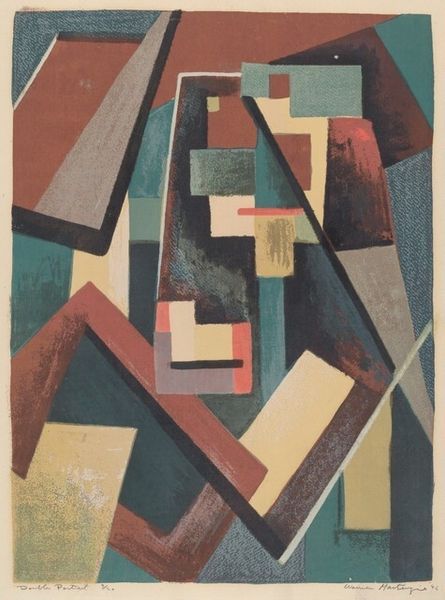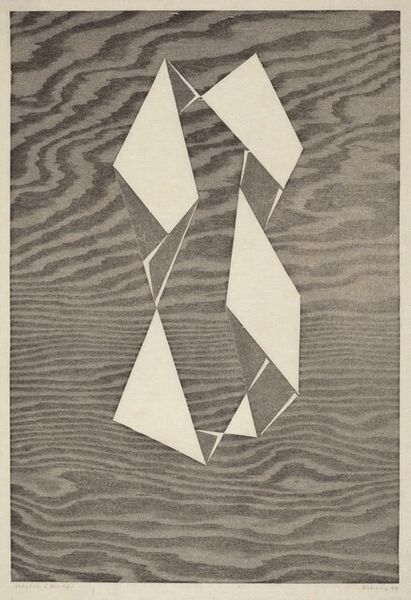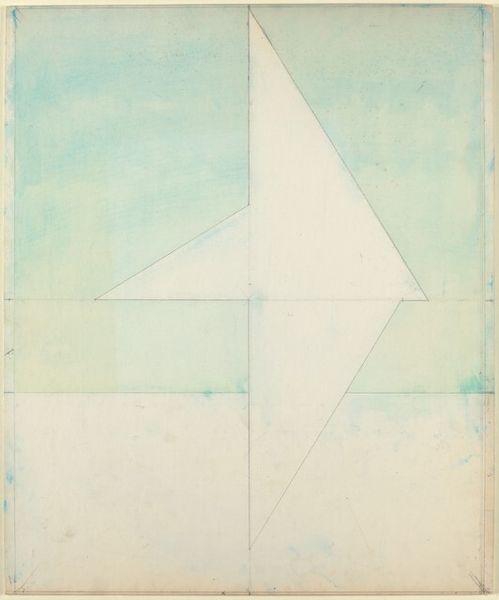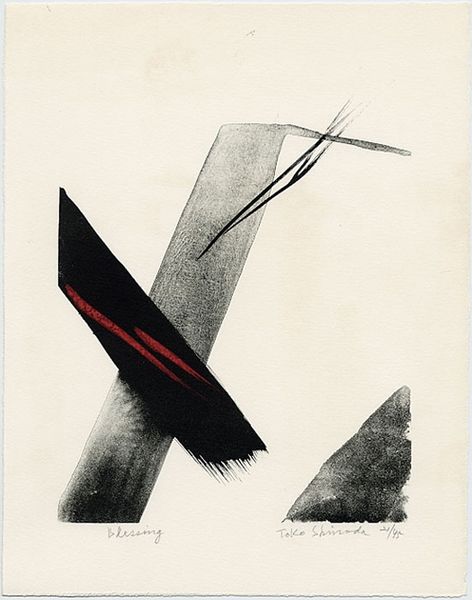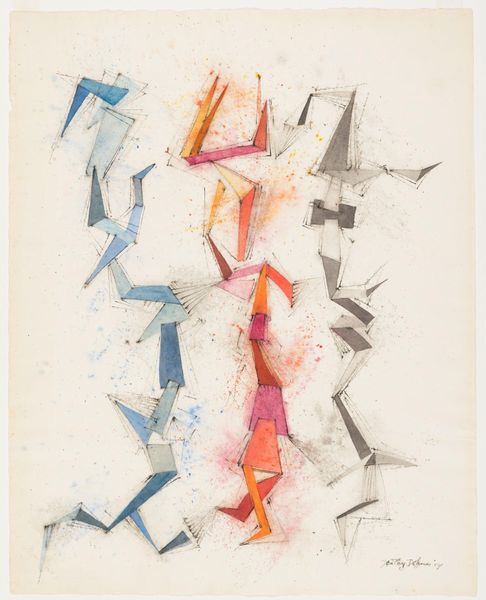
watercolor
#
water colours
#
abstract
#
watercolor
#
geometric
#
expressionism
#
line
#
watercolor
Copyright: Public Domain: Artvee
Editor: So, this is Paul Klee’s “Ringing,” made in 1928. It’s a watercolor, and it feels very ethereal. There’s this layering of geometric shapes and the bold red arrow that catches your eye immediately. What strikes you most about this work? Curator: I’m immediately drawn to the *making* of the watercolor. The transparency and fluidity are paramount. Note how Klee doesn’t try to hide the inherent qualities of the medium. The subtle gradations, the way the pigment settles and bleeds. It becomes about the active process, and I wonder how much control Klee exerted versus allowing the water and pigment to dictate the forms. Do you see how this process is, in itself, part of the meaning? Editor: I hadn’t considered the process so directly. The shapes seem so deliberately placed. Curator: Perhaps, but think about the labor involved, the specific qualities of the watercolor paper he's chosen, and how those contribute to the final image. What impact did Klee’s specific method of application have on the overall feeling? Is the emotional resonance stemming just from the image or is the emotional effect intrinsically bound to the creation process? Editor: I see your point. Knowing it’s watercolor gives it this delicate quality that a different medium wouldn't. The process becomes part of the visual language. Curator: Exactly! It raises questions. How does the handmade nature of the art object – a single piece made with watercolours, made using hands and requiring labour, in 1928 – contrast with, or comment on, early industrialisation or mechanisation of art practices, or the rise of factory-produced design during the same period? This contrasts with the machine age in that it requires slow hand labour and the manipulation of delicate tools. What message might the contrast convey? Editor: This really changes how I see Klee. It is no longer an abstract image alone, it also about manual labour and the selection of specific materials.
Comments
No comments
Be the first to comment and join the conversation on the ultimate creative platform.
